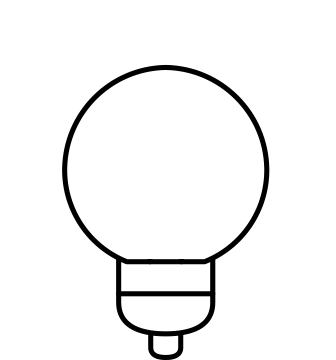Working from home: 5 tips on how to work even better from home with the right light
The current COVID-19 situation is forcing many people to move their workplace from the well-equipped office workplace to their own four walls. Not everyone has a study with ideal lighting conditions. And not every study was designed to provide an optimal working atmosphere for 40 hours a week.
The right light plays an important role in this. The following are the most important elements when making the short-term choice to work from home. A few tips on how to polish up existing studies in terms of lighting technology are naturally also included.
Good work needs good light
Focus and efficiency play a special role in everyday office life. The right light can help you to focus on your tasks and complete the different tasks with the necessary efficiency. We will show you in the following sections how light can master this:


Become a lighting designer with SLV home office tips
Whether you follow all the tips right away, or only those that are within your possibilities in terms of space: Every little optimisation will make your everyday life in your home office easier and bring a little more focus and efficiency to your work.
And if we have aroused your interest in even more optimisation potential, our experienced lighting designers are at your side. Just send us a message: [email protected]
 SLV SUBSIDIARIES
SLV SUBSIDIARIES













 SLV INTERNATIONAL
SLV INTERNATIONAL
/f/113144/578x253/6421bc53d0/en_good-light-solutions_homeofficetipps_tageslicht_578x253.jpg)
/f/113144/578x200/7ba6613eeb/de-de_good-light-solutions_homeofficetipps_karpo-line_578x200px.jpg)
/f/113144/578x253/a68ad720b6/en_good-light-solutions_homeofficetipps_grundhelligkeit_578x253px.jpg)
/f/113144/578x200/ebb13e568d/de-de_good-light-solutions_homeofficetipps_worklight-plus-line_578x200px.jpg)
/f/113144/578x325/30f6f5960d/en_good-light-solutions_homeofficetips3_room-layout_578x325px.jpg)
/f/113144/578x200/00f7c2a6f5/de-de_good-light-solutions_homeofficetipps_puri-track-line_709x320px.jpg)
/f/113144/578x253/373f0bb9df/en-gb_good-light-solutions_homeofficetipps_blendfrei_578x253px.jpg)
/f/113144/578x200/1ea53f9195/de-de_good-light-solutions_homeofficetipps_q-line-line_709x320px.jpg)
/f/113144/578x325/690ea6e4f1/en_good-light-solutions_homeofficetip5_basic-illumination_578x325px.jpg)
/f/113144/578x200/89fb2e884e/de-de_good-light-solutions_homeofficetipps_phelia-line_709x320px.jpg)
